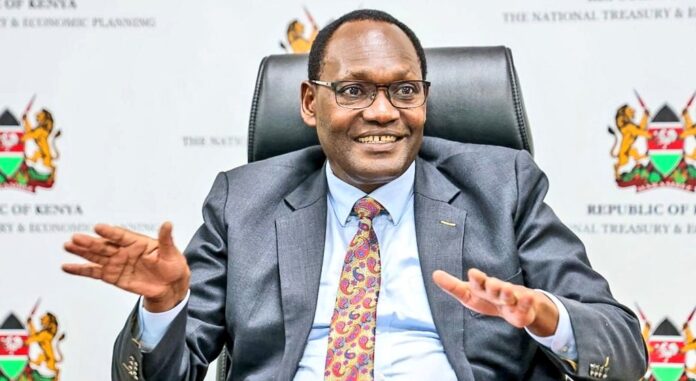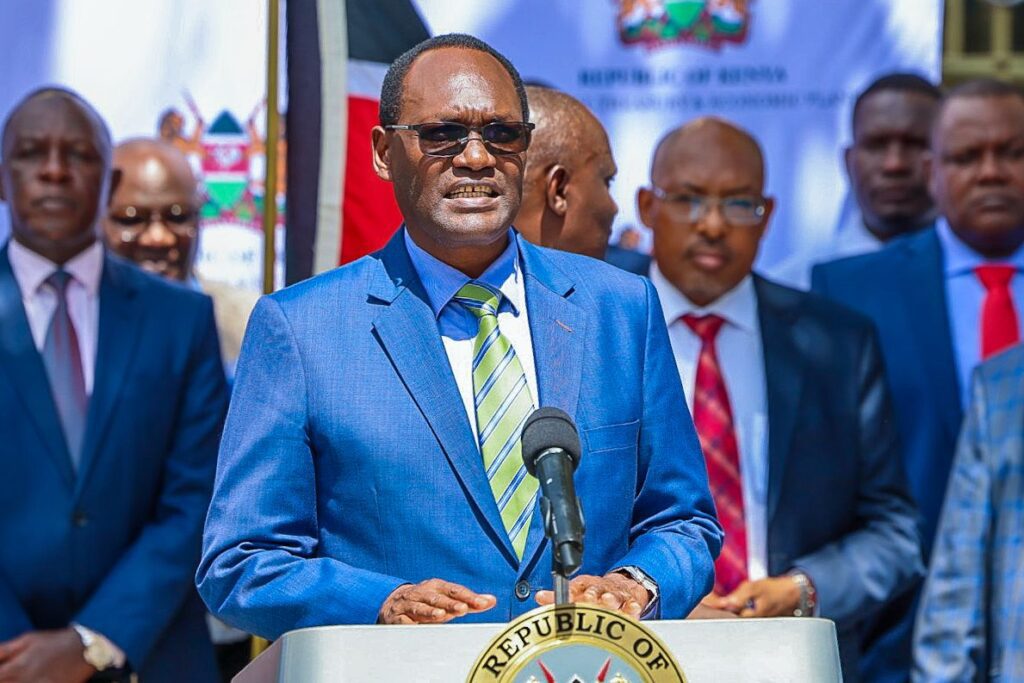
Kenya’s Gross Domestic Product (GDP) is set to grow at a rate of 5.6% this year according to the Africa Development Bank (AfDB) outlook for Kenya and with improved inclusivity and macroeconomic stability this rate would increase to 7% in the near future creating jobs and growing prosperity.
This positive outlook is buttressed by reports two days ago that Kenya is set to overtake Ethiopia in economic size.
“Kenya is set to surpass Ethiopia as East Africa’s largest economy this year, the International Monetary Fund (IMF) said, following the devaluation of the Ethiopian birr. The IMF projects Kenya’s GDP to reach USD 132 billion in 2025, compared to Ethiopia’s estimated USD 117 billion,” reported the respectable Chinese Television CGTN.
So, the International Monetary Fund has said it. For the stability that the Kenya Shilling has enjoyed against foreign currencies against the US Dollar, the Ethiopian Birr has slumped to the same in a drastic way giving Kenya a strong position in relative terms.
Back home, the economy has improved steadily since June 2021 upon President William Ruto taking over power.
Having taken over power against a background of serious prolonged drought as well as the unprecedented COVID-19 epidemic, the Kenya Kwanza had a herculean task to perform and deliver the United Democratic Alliance (UDA) Party manifesto to Kenyans.
Assembling a cabinet, a team of technocrats to carry the message home by implementation was one key decision for the newly elected president Ruto.
Crucial to this was the Treasury and in here the President went for a capable, educated and experienced Dr Chris Kiptoo as the Principal Secretary for Treasury.
Dr Kiptoo had earlier served as a PS in other ministries including Ministry of Environment and Forestry as well as at the State Department of Trade, Ministry of Industry, Trade & Cooperatives.
Additionally, Dr. Kiptoo had accumulated a wealth of experience in economic policy analysis, mainly gained at the Central Bank of Kenya, Capital Market Authority and the International Monetary Fund, where he has served in various capacities.
The University of Nairobi International Finance PhD holder has extensive expertise relating to the design and implementation of monetary policy as well as balance of payments and exchange rates.
His other areas of distinction are fiscal operations and policy, financial sector matters including capital markets, national accounts, real sector and macroeconomic accounting and modelling and forecasting.
Dr. Kiptoo has applied these skills to the letter working as team with now two Cabinet Secretaries, Prof Njuguna Ndung’u and CPA John Mbadi.
In fact, when PS Mbadi called the inaugural Press Conference at the Treasury on February 13, he said his was just a spokesperson of the Treasury but his real team and workers were those led by PS Kiptoo.
“I am just the Spokesperson of the Ministry, let me allow the people who do the real work to exbound on these matters,” said Mr. Mbadi as he waved on Dr Kiptoo on live TV on Harambee Avenue.

Today he is accompanying and Mr Mbadi and Energy CS Opiyo Wandayi are leading the Kenyan delegation in Washington D.C at the 2025 International Monetary Fund (IMF) / World Bank Group (WBG) Spring Meetings taking place from April 21 to 26, 2025, in Washington DC. discussing Kenya’s fiscal policy and the debt burden that has been a pain in the neck for Kenya’s economic recovery.
“Today, I had the honor of representing my Cabinet Secretary Hon. John Mbadi at a high-level working breakfast hosted by the Corporate Council on Africa (CCA). This session brought together select African Ministers of Finance to engage in meaningful dialogue on key issues shaping the future of U.S.-Africa economic relations,” posted P.S Kiptoo on his X page.
Notably, the meeting was led by Ms Florie Liser, President and CEO of CCA, and Ms. Constance Hamilton, Assistant U.S. Trade Representative for Africa, we engaged in discussions on pivotal topics, including the African Growth and Opportunity Act (AGOA), tariff policy, and broader commercial cooperation.
Crucially, the imminent September 2025 expiration of AGOA.
“This Act has been a cornerstone for African exports to the U.S., driving trade growth, job creation, and industrial development across our continent. Our exchanges explored the implications of U.S. tariff policies,” said Dr. Kiptoo.
Recently the Treasury had launched the 2025 Debt Management Strategy for 2025 outlining key reforms aimed at ensuring debt sustainability, lowering and minimizing costs and risk management over the 2025-2028 period.
Notably, as of June 2024 Kenya’s debt stood at 10.58 trillion or 65.8% of the GDP. The delegation in Washington D.C is exuding confidence against a backdrop of January 2025, Moody’s Ratings that has affirmed Kenya’s long-term issuer ratings at Caa1 while changing the outlook from negative to positive.
This positive outlook change is driven by the easing of liquidity risks and the potential for improved debt affordability over time.
In spite of the positive indications P.S Kiptoo is not the one to sit in a comfort zone. He immediately warned Kenyans saying Kenya must cut down on borrowing and that the tax bracket may be widened to shore up revenue.
“We do not have the leisure to borrow more,” Kiptoo said yesterday during the fifth Diamond Trust Bank (DTB) Economic and Sustainability Forum, in Nairobi.
Dr Kiptoo and his colleagues’ efforts having borne fruits with the most recent historic Kenya Airways returning a massive Sh 5.4 billion profit after years in the red.
This impressive result of the year ending December 2024 represents a remarkable turnaround from a loss of Sh 22.6 billion reported the previous year, reflecting an improvement of Sh 28 billion and a 124% increase in net profit.
The sole African carrier in the SkyTeam Alliance success highlights the effectiveness of the recovery strategy under Project Kifaru, which has focused on enhancing operational performance through various initiatives and delivering exceptional customer service through specific actions.
Yet this is not the only resounding success of the treasury and government bottom-up economic model with P.S Kiptoo as the principal Secretary.
Kenya has seen tremendous resilience in an environment of deliberate Fiscal and Monetary policy decisions that has brought down inflation form as high as 6% to the current core inflation to 2.2% easing Consumer Price Index.
Among them is the stability of the Shilling against the US Dollar and other international currencies.
Averaging 129 against the Dollar, the Shilling has provided the quintessential stability in the forex market facilitating predictability and market confidence among investors from a high of Sh 137 two years ago.
Notably the fertilizer subsidy has ensured a return to food security and a general boost to agricultural production with the retail price of 2kg packet maize floor coming down from a high of Sh 250 two years ago to the current of Sh 90 in some retail shops.
Most importantly has been the steady drop in pump prices as well as cost of electricity per Kilowatt Hour with a huge impact on the general cost of energy and consequently cost of production.
With such prudential leadership at the Treasury there is no doubt that Kenya will derive full benefits from the recent over 20 Memoranda of Understanding signed between President Ruto and Chinese President Xi Pin that includes the extension of the SGR from Naivasha to Malaba via Kisumu as well as the dualing of the Rironi-Mau Highway.






